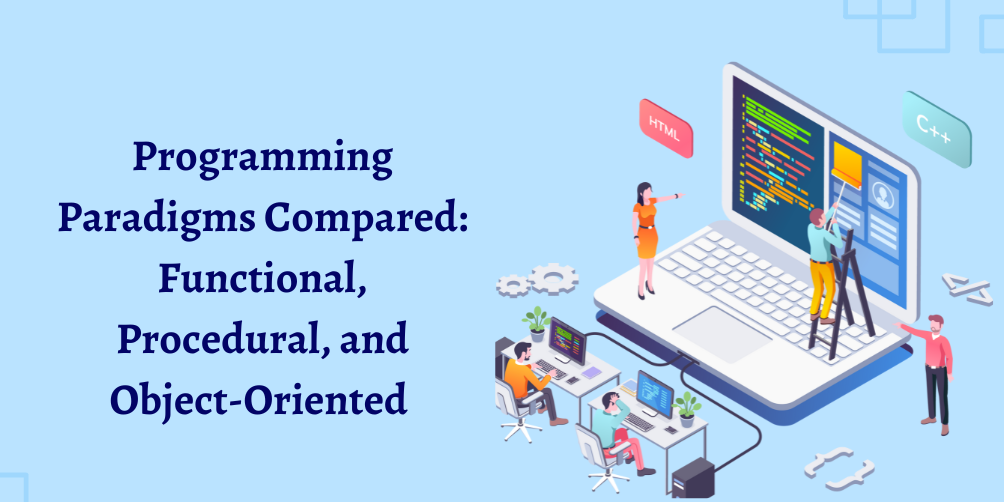Unveiling Reactive Programming vs. Other Programming Paradigms
In the ever-evolving landscape of software development, various programming paradigms have emerged, each offering a unique approach to solving problems and building applications. Among these, reactive programming has gained considerable attention for its ability to handle asynchronous and event-driven scenarios efficiently. In this blog post, we’ll explore reactive programming in comparison to other prominent programming paradigms, shedding light on their strengths, limitations, and ideal use cases.
Understanding Reactive Programming
Reactive programming is centered around the idea of building systems that react to changes and events in real-time. It focuses on the flow of data and how it transforms over time, enabling developers to write more responsive and scalable applications. Key characteristics of reactive programming include:
- Asynchronous Operations: Reactive programming excels in managing asynchronous operations, such as user interactions, network requests, and data streams, without blocking the main thread.
- Event-Driven: Reactive programming shines when dealing with event-driven scenarios, where components react to incoming events and changes without manual intervention.
- Data Streams: The paradigm revolves around working with data streams, which can represent continuous sequences of events or data updates.
Comparing Reactive Programming with Other Paradigms
Let’s delve into how reactive programming compares to other popular programming paradigms:
1. Imperative Programming
Imperative programming involves giving explicit instructions to the computer on how to perform tasks step by step. While it’s straightforward, it can become complex and harder to maintain in scenarios with numerous asynchronous operations. Reactive programming offers a more streamlined approach to handling concurrency and event-driven situations.
2. Object-Oriented Programming (OOP)
Object-oriented programming focuses on creating classes and objects to encapsulate data and behavior. Reactive programming can complement OOP by providing a way to handle events and asynchronous operations more effectively. Reactive extensions can be integrated into OOP languages to enhance responsiveness.
3. Functional Programming
Functional programming emphasizes immutable data and functions as first-class citizens. Reactive programming aligns well with functional programming principles, as both emphasize data transformation and the composition of functions. They can work together to create applications with better modularity and maintainability.
4. Procedural Programming
Procedural programming involves breaking down a program into a series of procedures or functions. Reactive programming offers a more efficient way to manage asynchronous events and data flows compared to manually managing callbacks or promises.
Here’s a comparison table that highlights the differences between reactive programming and other programming paradigms:
| Paradigm | Focus | Characteristics | Strengths | Limitations |
|---|---|---|---|---|
| Reactive Programming | Asynchronous, Event-Driven | – Handling asynchronous operations | – Real-time updates | – Learning curve |
| – Managing data streams | – Scalability and responsiveness | – Complex scenarios can be challenging | ||
| – Reacting to changes in real-time | – Streamlined concurrency handling | – May not be optimal for all applications | ||
| Imperative Programming | Step-by-Step Instructions | – Explicit instructions | – Straightforward to write and understand | – Can lead to complex and hard-to-maintain code |
| – Sequential execution | – Well-suited for simple, linear operations | – Limited scalability in asynchronous tasks | ||
| – Control flow based on commands | – Precise control over program execution | – Asynchronous scenarios can be challenging | ||
| Object-Oriented Programming | Classes and Objects | – Encapsulation of data and behavior | – Modular design and code reuse | – Potential performance overhead |
| (OOP) | – Inheritance and polymorphism | – Clear organization of code | – Complexity in large projects | |
| – Focus on data manipulation | – Well-suited for modeling real-world objects | – Can lead to tight coupling between classes | ||
| Functional Programming | Immutable Data, Functions | – Focus on functions and data | – Emphasis on immutability and pure functions | – Learning curve for those new to paradigm |
| – First-class functions | – Parallelism and composability of functions | – Not always suitable for imperative scenarios | ||
| – Data transformation | – Avoids side effects | – Performance concerns for certain operations | ||
| Procedural Programming | Procedures, Functions | – Structured and modular code | – Clear organization of program logic | – Limited support for asynchronous operations |
| – Sequential execution | – Well-suited for straightforward operations | – Difficulty in handling complex data flows | ||
| – Reusability of functions | – Simple maintenance and debugging | – Potential for code duplication |
Finding the Right Paradigm for Your Project
The choice of programming paradigm depends on the nature of your project and its requirements. Reactive programming is an excellent choice when dealing with real-time updates, dynamic user interfaces, and asynchronous workflows. However, it’s not a one-size-fits-all solution. In some cases, a combination of paradigms might be the most suitable approach.
Reactive programming stands as a powerful programming paradigm that addresses the challenges of handling asynchronous and event-driven scenarios effectively. When compared to other paradigms like imperative, object-oriented, functional, and procedural programming, it offers distinct advantages in terms of responsiveness and scalability. The choice of paradigm should be guided by your project’s needs and your familiarity with different approaches. By understanding the strengths and limitations of each paradigm, you’ll be better equipped to make informed decisions and craft high-quality software solutions.

